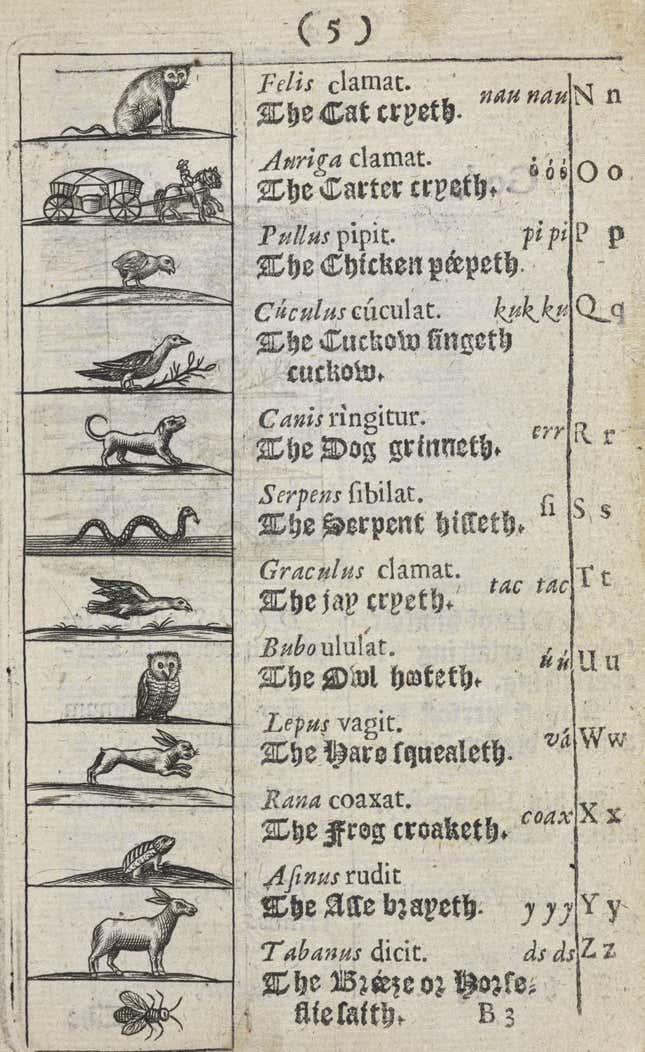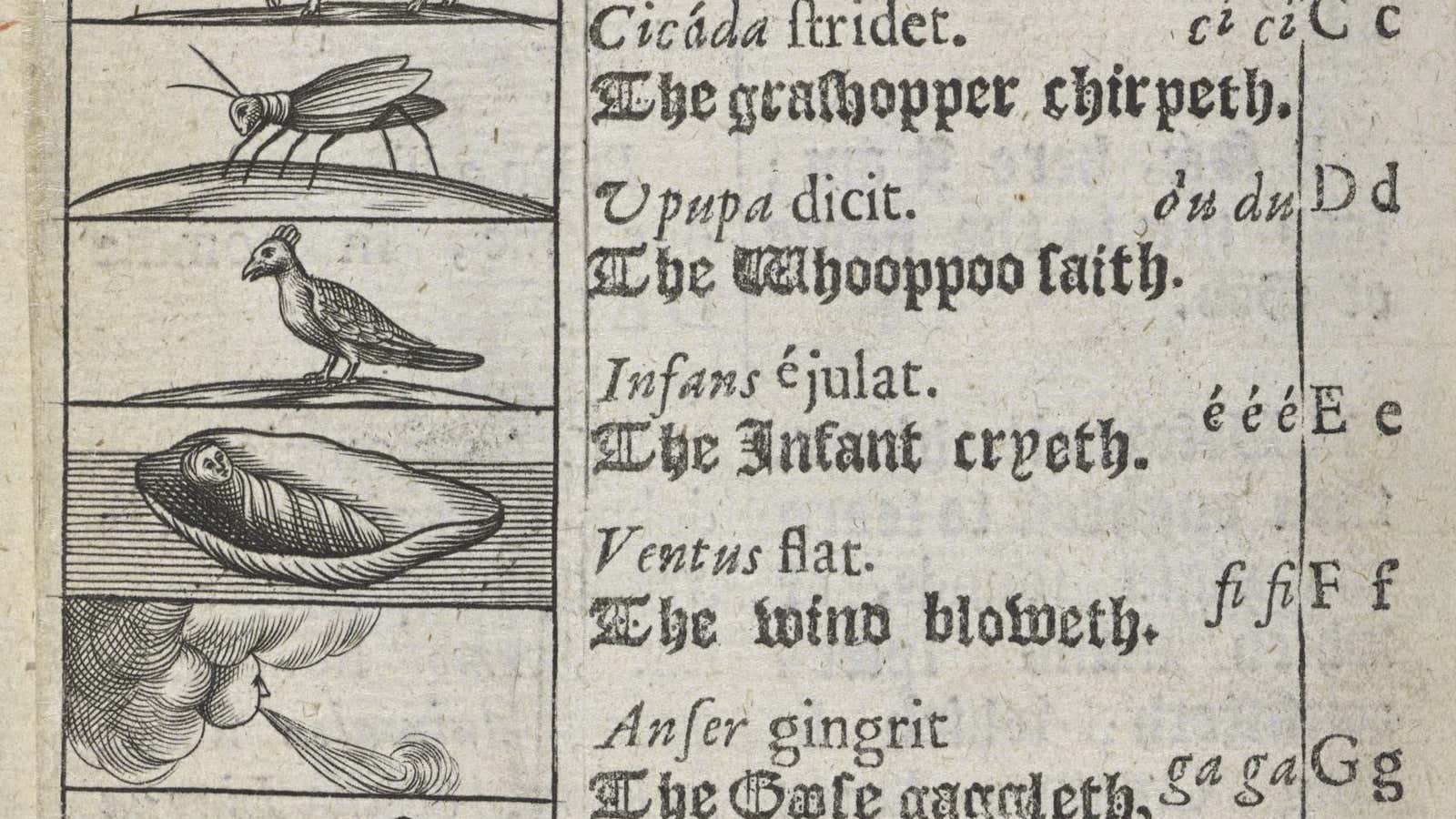For 350 years, parents across Europe have taught their kids the “oo” of the noble owl.
Orbis sensualium pictus by Czech educator Jan Komenský is often called the first picture book for children, and was published in Latin and German in 1658. A careful look at the 1659 English translation reveals a very contemporary lesson: teaching kids letters and sounds through the croaks and peeps of animals.
Young 17th-century students learned that:
- The Lamb blaiteth: bé é é
- The Duck quacketh: kha kha
- The Chicken péepeth: pi pi


The way humans express and write animal sounds is not universal, so the pages include some sounds that look less familiar to English speakers today, like “The Cat cryeth ‘nau nau.'”
It’s unclear why using animals and animal sounds to teach kids remains so popular today. Most city and suburban-dwelling kids in the US are unlikely to stumble upon snakes—and if they do, their study of the snake’s hiss is unlikely to be of much use.
Mimicking other species may not be the most effective way to transmit knowledge to developing human minds, either. The children’s book Mr. Brown Can Moo, Can You? “makes a fun story and maybe it fits with somebody’s folk intuition about what might be easy for a baby to understand,” psychologist Amanda Woodward, of University of Chicago’s infant learning and development lab, tells The Boston Globe. “But in fact it’s not especially easy for a baby to understand.”
One possible reason for this pedagogical tradition’s longevity is that the sheer variety of animals and their sounds makes for good source material for the letters of the alphabet. Or maybe educators just expect kids to like animals, and that the simple sounds help them practice speech in general. And shouting ”moooooooooooo” is fun.
